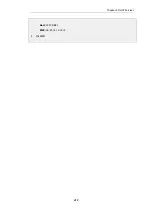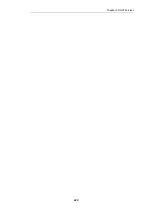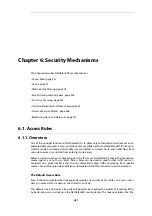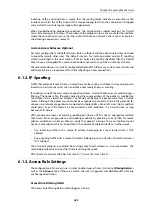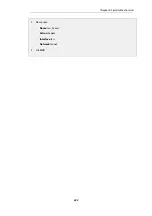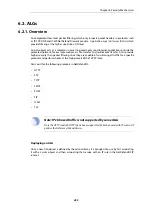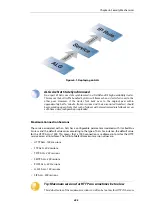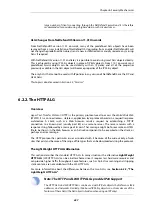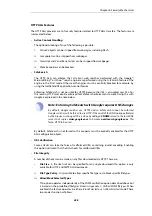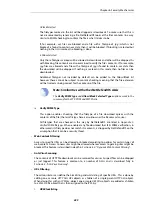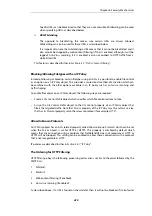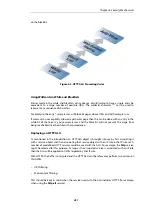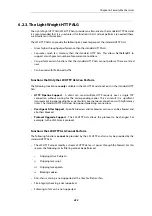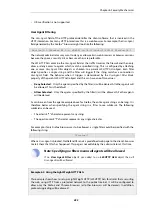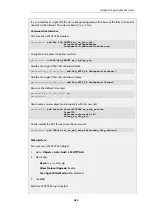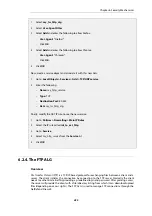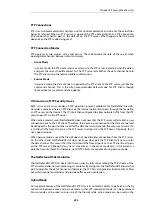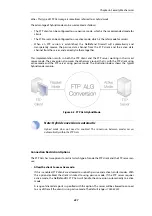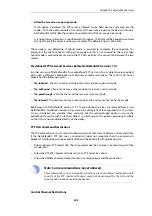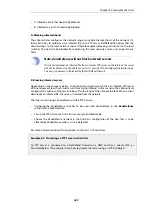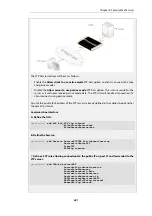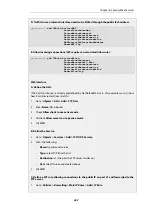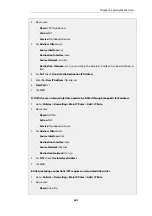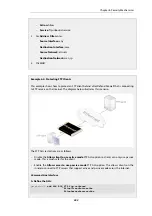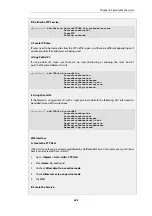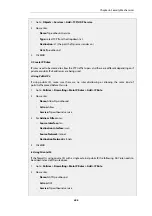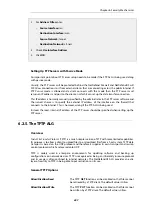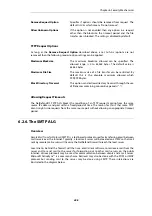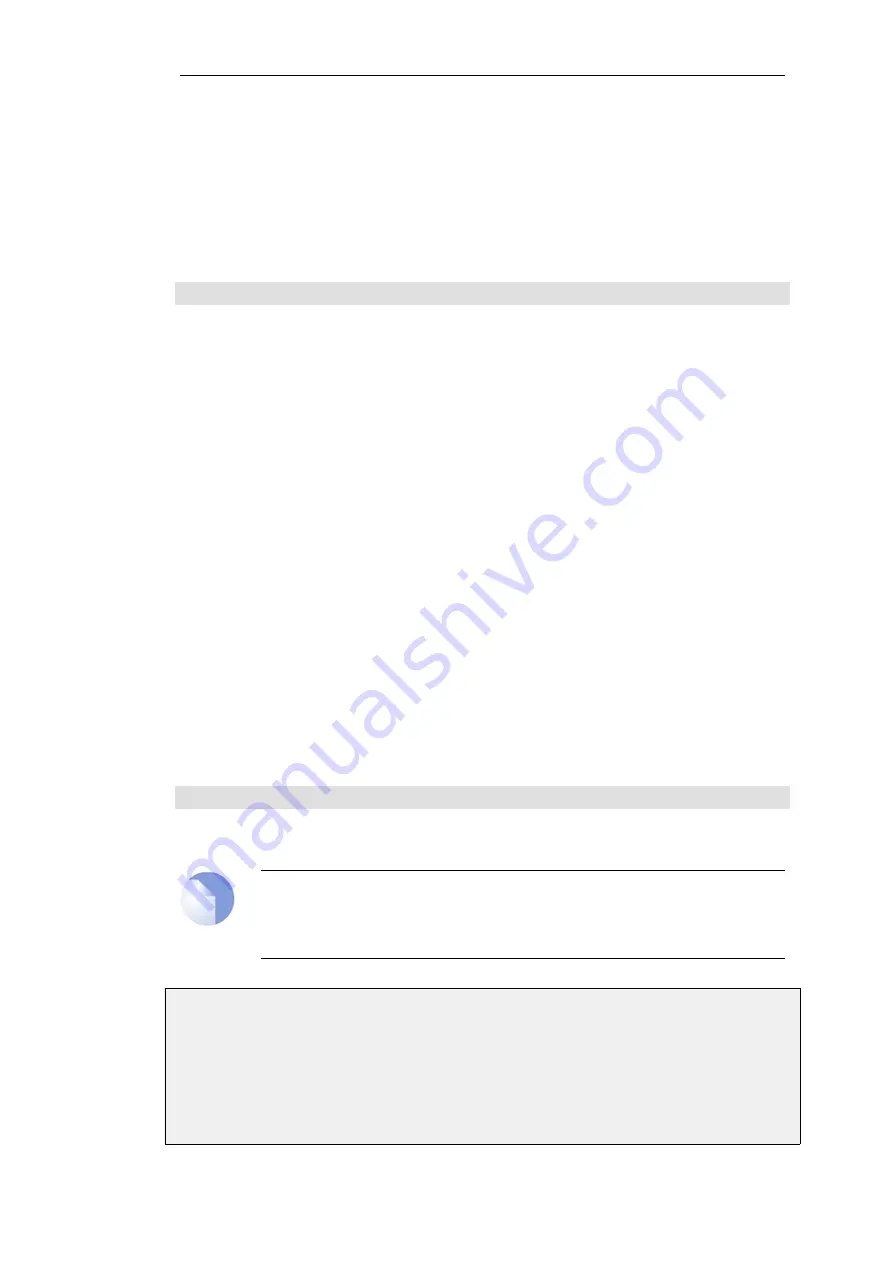
•
URL verification is not supported.
User Agent Filtering
The
User-Agent
field of the HTTP protocol identifies the client software that is involved in the
HTTP interaction. For many HTTP interactions this is a web browser. For example, the
User-Agent
field generated by the Firefox™ browser might look like the following:
Mozilla/5.0 (Windows NT 6.1; WOW64; rv:36.0) Gecko/20100101 Firefox/36.0
The network administrator may want to deny or allow certain web browsers or browser versions
because they pose a security risk or because others are preferable.
The LW-HTTP ALG examine the
User-Agent
field as the traffic traverses the firewall and then only
allow or deny access to agents which match a specified string. This is configured by attaching
one or more
User-Agent Filter
objects as children to a parent
LW-HTTP ALG
object. Each filter
object specifies a single string and the filter will trigger if the string matches a connection's
User-Agent
field. The behavior when it triggers is determined by the
User-Agent Filter Mode
property of the parent
LW-HTTP ALG
object and this can have one of two values:
•
Deny Selected - Only the agents specified by the filter(s) will be denied. All other agents will
be allowed. This is the default.
•
Allow Selected - Only the agents specified by the filter(s) will be allowed. All other agents
will be denied.
As can be seen from the agent example above for Firefox, the entire agent string can be long. It is
therefore better when specifying the agent string in a filter to use wildcards. The following
wildcards can be used:
•
The asterisk "*" character represents any string.
•
The question mark "?" character represents any single character.
For example, if only Firefox browser was to be allowed, a single filter could be specified with the
following string:
*Firefox/*
When a
User-Agent
is blocked, NetDefendOS sends a predefined web page to the client's browser
to alert them that this has happened. This page is not editable by the administrator at this time.
Note: Specifying no filters means all agents will be allowed
If no
User Agent Filter
objects are added to an
LW-HTTP ALG
object then all
User-Agents will be allowed.
Example 6.2. Using the Light Weight HTTP ALG
This example shows how to set up a Light Weight HTTP (LW-HTTP) ALG for clients that are surfing
the web using HTTP from a protected network to the public Internet. It will be configured to
allow only the Firefox and Chrome browsers (all other browsers will be denied). In addition,
protocol upgrading will be allowed.
Chapter 6: Security Mechanisms
433
Summary of Contents for NetDefendOS
Page 30: ...Figure 1 3 Packet Flow Schematic Part III Chapter 1 NetDefendOS Overview 30 ...
Page 32: ...Chapter 1 NetDefendOS Overview 32 ...
Page 144: ...Chapter 2 Management and Maintenance 144 ...
Page 284: ...Chapter 3 Fundamentals 284 ...
Page 392: ...Chapter 4 Routing 392 ...
Page 419: ... Host 2001 DB8 1 MAC 00 90 12 13 14 15 5 Click OK Chapter 5 DHCP Services 419 ...
Page 420: ...Chapter 5 DHCP Services 420 ...
Page 573: ...Chapter 6 Security Mechanisms 573 ...
Page 607: ...Chapter 7 Address Translation 607 ...
Page 666: ...Chapter 8 User Authentication 666 ...
Page 775: ...Chapter 9 VPN 775 ...
Page 819: ...Chapter 10 Traffic Management 819 ...
Page 842: ...Chapter 11 High Availability 842 ...
Page 866: ...Default Enabled Chapter 13 Advanced Settings 866 ...
Page 879: ...Chapter 13 Advanced Settings 879 ...

